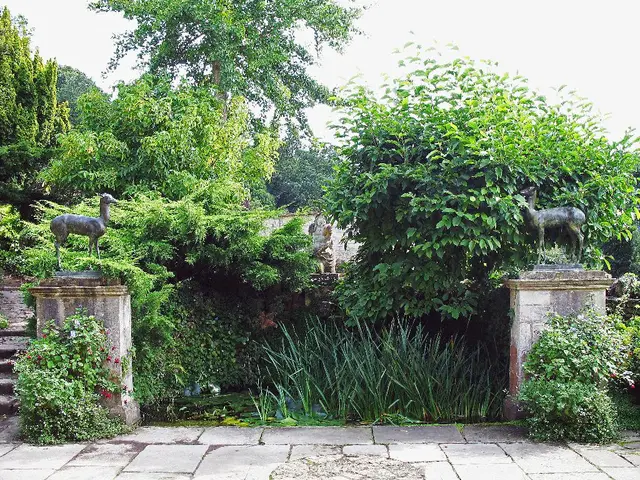Transforming Realistic Bonsai Wood Sculptures: Mastering Detailed Wood Carving Techniques
For bonsai enthusiasts seeking to elevate their craft, deadwood carving presents a captivating challenge. By mastering this art, you can create intricate textures, patterns, and shapes that evoke the passage of time and the forces of nature. Here's a guide to help you on your journey.
Understanding the Natural Flow of Deadwood
To carve realistic deadwood, it's essential to study the way real trees age. Observe how their dead parts (jin, shari) look, including peeling bark, cracks, and erosion caused by elements like wind, rain, and insects. This guides how to carve patterns that tell a story of time and struggle.
Preserving Live Veins
Preserving live veins while carving deadwood is crucial for maintaining tree health and visual tension. In advanced juniper stock transformations, deadwood sections are carefully carved while keeping live veins intact.
Utilizing Specialised Tools
Using specialized tools like pliers to pull deadwood fibers for texture variation and carving tools to create smaller sections is vital. This balance between tapering deadwood and living branches ensures aesthetic harmony.
Gradual Pulling and Peeling
Pulling and peeling smaller fibers rather than large chunks enhances realism. This subtlety prevents damage to the tree and creates a more natural-looking deadwood.
Incorporating Design Principles
Incorporating design principles such as proportion, taper, and flow can make smaller deadwood pieces balance large parts, avoid symmetrical or mechanical carving, and maintain natural shapes that visually narrate the tree's history.
Creating Tension and Balance
Practice creating tension and balance between deadwood and live parts. Sometimes, deadwood can be used to hide wounds or roughly sawn branches, enhancing the aged appearance.
Experimenting with Deadwood Placement
Experiment with deadwood placement and flow when combining deadwood with living trunks or branches. For example, in "Tanuki" bonsai, deadwood adds character, and the flow guides the shaping.
Practical Instruction and Visual Guidance
For practical instruction and visual guidance, view detailed, step-by-step tutorials like the Ukiyo Bonsai video. Following expert bonsai artists' social media content can also reveal nuanced methods of carving and shaping deadwood organically.
Achieving Realistic Insect Damage and Scars
To create realistic insect damage and scars, use randomized patterns, depth and texture variation, and subtlety.
Suitability of Species for Carving
Most species are suitable for carving between 5-15 years old, when the tree has developed sufficient character and stability. However, deadwood carving is not suitable for all bonsai tree species due to factors like soft or brittle wood.
Revitalizing Deadwood
Deadwood revitalization breathes life into seemingly lifeless branches, transforming them into visually striking, emotive focal points that captivate the viewer's imagination. Techniques to achieve a realistic fading bark pattern include gradual color shift, pattern variation, and subtle texture.
The Reward of Patience
The patience required to create a bonsai masterpiece is rewarded with a living, breathing work of art that whispers secrets of the natural world. Regular sealing and protection of carved deadwood are essential to preserve its beauty and longevity.
By combining careful technical carving skills, an artist’s eye for natural aging patterns, and patience to refine texture and shape, you evoke the passage of time and the forces shaping trees, achieving mastery in bonsai deadwood art.
Incorporating technology and gadgets like specialised carving tools and video tutorials can enhance your bonsai deadwood carving skills. By combining these tools with knowledge about home-and-garden elements like suitability of species for carving and deadwood revitalization, you can elevate your lifestyle as a bonsai enthusiast.
When exploring home-and-garden trends, consider expanding your hobbies to include gadgets and technology related to bonsai care, such as moisture meters and electronic scalers, seamlessly integrating these modern conveniences into your home-and-garden lifestyle.



